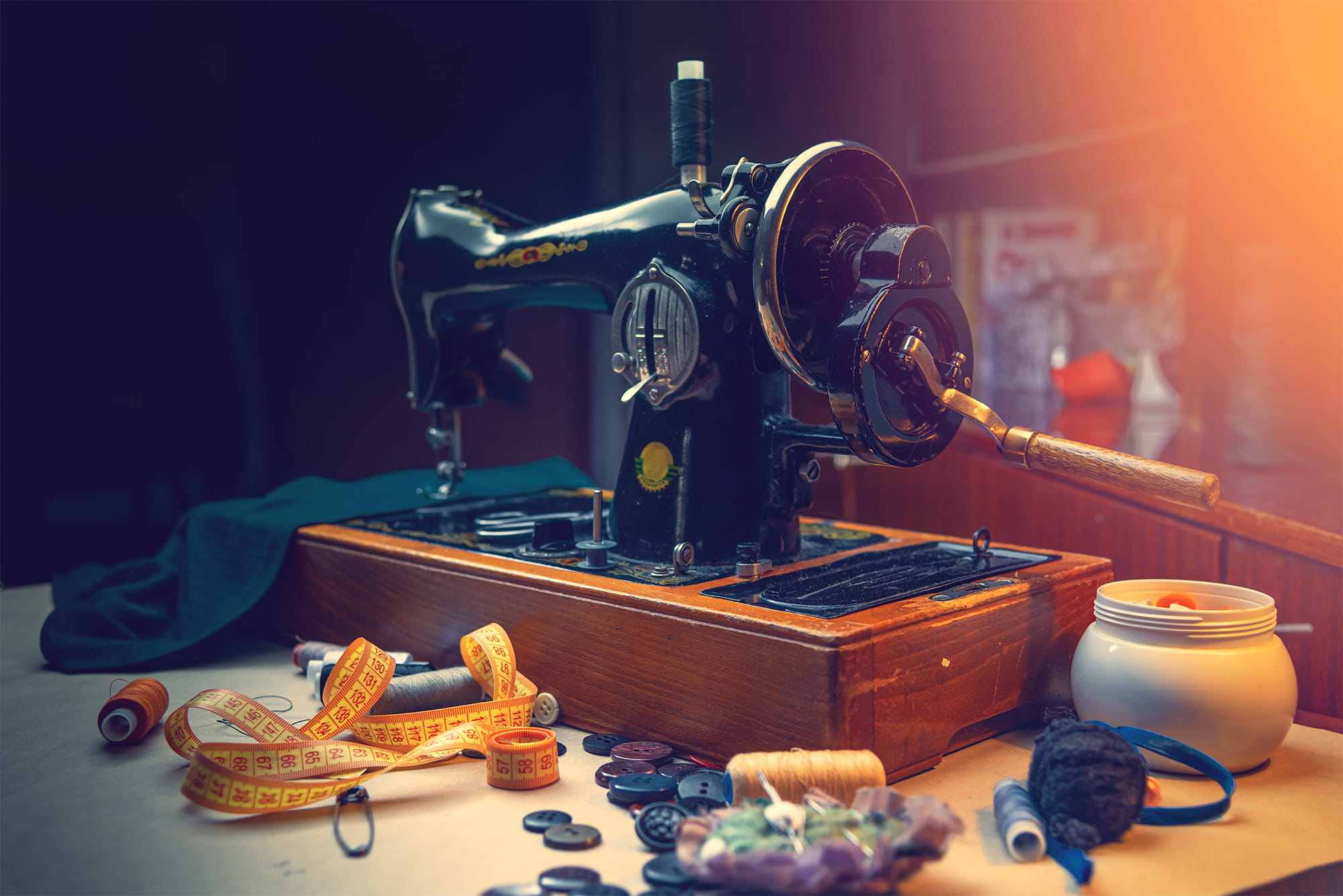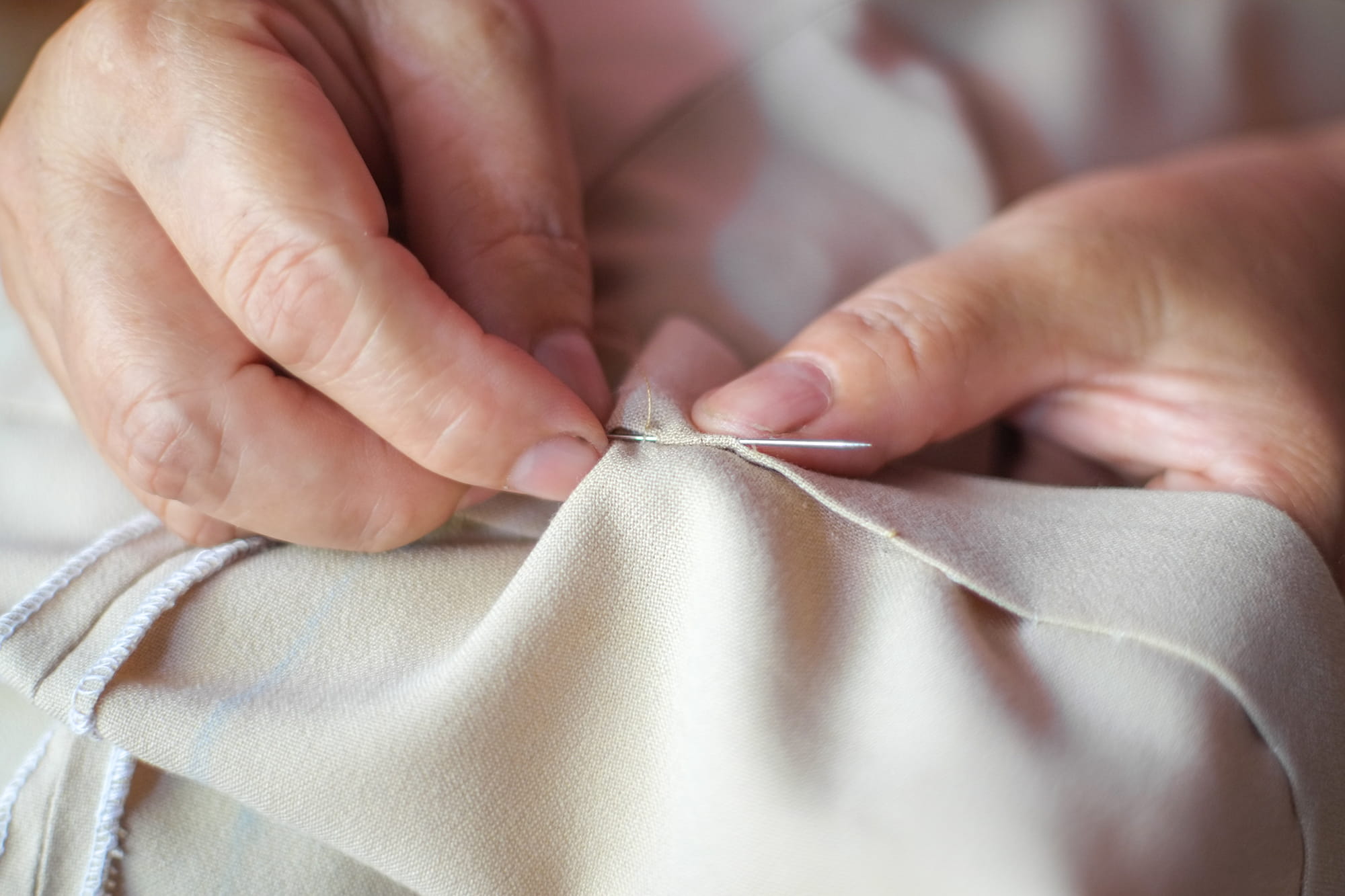More and more people turn to solutions that promote a responsible approach and follow changes that occur in the world. At the time of increasing environmental awareness more than ever, we turn to clothing mending as an alternative to consumption. This change not only decreases the amount of textile waste but also promotes more sustainable lifestyle. Mending of clothing, once seen as necessity, today it is becoming a fashionable trend. Practices such as mending and redesigning have been gaining its popularity, changing our approach to fashion and consumption.
This tendency is also observable in the world of great designers. Fashion icons, such as Stella McCartney and new talents, such as Marine Serre, alter clothes or use recycled textiles, thus promoting sustainable fashion. In Poland the number of designers, who create unique collections out of recovered textiles, focusing on ecological approach is also growing. Initiatives such as altering, sewing and lastly mending clothes and shoes, that have been kept in perfect condition for many years, have becoming popular. It shows that responsible fashion is gaining bigger recognition, influencing our approach to consumption and environment protection.
The Forgotten History of Fashion
Today, younger generations find hard to imagine that not so long ago, only several dozens of years ago, mending, altering and refurbishing clothes made up one branch of textile industry. In the past, sewing skills were common and essential for prolonging the lifetime of clothing. At the time before industrial revolution, when textile manufacturing was time-consuming and costly, mending was the norm. People possessed limited number of clothes and tried to use them for as long as possible. Mending skills were handed down over the ages from generation to generation, which allowed to preserve clothing in good condition for many years. In the 18th century, before the beginning of industrial revolution, the majority of clothing was hand-sewn at home or by the local tailors, which required a lot of work and textiles. Possessing and wearing clothes was more sustainable, and their mending was a commonly accepted practice.
The invention of sewing machine by Isaac Singer in 1851 significantly accelerated the process of clothing production, making them cheaper. Consequently, in the 19th century the availability of clothing significantly increased and their production became faster and less costly. Consumption became to increase and mending gradually lost its significance. In the 20th century, especially after the Second World War, the development of economy and the rise of societies revenue additionally accelerated the process, leading to the consumerism. People began to prefer buying new clothes instead of mending the old ones, which caused the marginalisation of mending practices. … However, as it turned out – not for long. In view of the rising ecological awareness and climate crisis, the mending of clothing has begun to regain its relevance anew. In the 21st century we observe the renewal of remedial practices.

According to the report conducted in February 2024 by ARC on the request of Polish clothing manufacturer, company LPP, on social awareness of prolonging the lifespan of clothing, up to 47% of Poles try to repair damaged clothes on their own, and 57 % use services provided by tailors. Numerous organizations and new businesses have been created, whose aim is the very repairing and renewing the old stuff.
One of them is, for example, the organisation Repair Café, founded by Martine Postma in Amsterdam which promotes the repairing of various stuff, including clothes as a way to reduce waste. We have a similar example in Poland – woshwosh, founded in 2015, offering shoe repair and cleaning, as well as education and spreading awareness about zero waste and promoting craftsmen.
The changing attitude of customers is also reflected in pro-ecological policies. Governments and international organisations have begun to make adjustments aiming at the reduction of textile waste and promoting the mending and recycling textiles. An example could be support programs for the local sewing workshops and educational campaigns aimed at increasing the awareness about clothes mending functioning in Belgium.
Big Return of Thread and Needle
As the awareness of customers has been changing, more and more frequently the approach of fashion companies also changes – they not only decide to use recycled textiles, but also to promote and educate the society in the area of clothes care and mending. By recognising the customers’ needs, companies notice that if mending was more accessible or if we were given better skills in this area, we would much rarely throw away our clothes. According to the mentioned report, more than half of respondents answered they had damaged clothes for which they have most feeling for, but they also lack knowledge of the damage repairs or how they could convert the damage. Interestingly, as many as 71% of the respondents want the access to the compendium collecting advice on mending/converting clothes or they want to learn how to mend clothes, and the most attractive form of popularizing the knowledge is considered to be short video tutorials.
Allowing mending clothes to be back on track could then significantly decrease the amount of textile waste, which, as we know, is crucial in fighting with the environmental pollution. Moreover as many as 73% of Poles believe that the limitation of buying new clothes could have a positive influence on the environment, and 80% claim that mending clothes has a positive effect on planet Earth. It indicates the growing ecological awareness and readiness for taking actions to protect the environment among consumers. Let’s also remember that mending practices and promoting them clearly favour more sustainable lifestyle and teach us greater responsibility for our choices of consumption. We increasingly recognise that throwing away clothes has a negative influence on the environment and our consumer awareness is important. That’s why it is important to promote mending, renewal and caring of clothes as well as shoes so that they would become our everyday habit, first choice action.
Mending is also promoting craftsmen and return to the traditional sewing skills which may play a crucial role both in the process of creation as in the development of the whole fashion industry. According to the report, we want to change ourselves and we are even more open for the changes. Besides segregation of waste and saving water, we declare that we use our stuff as long as they can be mended, and more than half of us limit buying clothes to care about the environment. Companies also starting to operate on a large scale. They increasingly understand that it is up to them how the fashion industry will change. On this account it is worth educating the consumers and take initiatives aimed at creating new consumer habits. We must bear in mind that in order to fight effectively with environmental pollution and reduce the number of textile waste, it is necessary to change the consumers’ approach as well as to engage companies. Education in the field of clothes mending and renewal should be widely accessible, and sewing and craft skills should be promoted. Only through joint activities we can achieve permanent changes and build the future in which fashion will not be burden on our planet, but its support.
Martyna Zastawna
Founder of the brand woshwosh, climate expert at the European Investment Bank and the UN.

